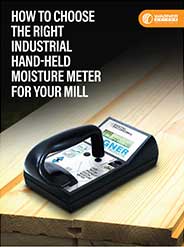Video 5 – Calcium Chloride Shown to Give False Readings (pt. 2)
On this next slide, we’ll take a look at the relationship between the calcium chloride kits and the internal relative humidity measured with probes in the concrete. I’m often asked the question: What is the relationship? Does three pounds measured at the surface of the concrete equal a certain percentage of humidity down in the concrete?
Well, this graph is based on about 100 different paired measurements where calcium chloride kits were put on the surface of concrete and a humidity probe was drilled into the concrete right next to it. Several colleagues of mine around the country and our organization made these measurements. What we’ve done is to plot them here.
On the left-hand vertical axis, you see ASTM calcium chloride kit number 2, 4, 6, 8 pounds, and on the horizontal axis, down at the bottom of the graph, you see the internal relative humidity ranging from 50% to 100%.
At first glance, there’s really no relationship. It’s kind of a scatter diagram. If there was a good clear relationship between relative humidity and calcium chloride kit values, you’d expect the points to fall along a nice straight line, and obviously they don’t. But there are some useful bits of information from this data.
First of all, if you look at the dozen or so points all the way over on the right-hand side at the top, you see that any calcium chloride kit value above about 10 pounds tends to indicate there’s greater than 90% humidity in the slab.
Now, the opposite is not true, which we’ll talk about in just a minute. What I take away from this work is that if you do get a very high calcium chloride kit value, let’s say above 10 pounds, the floor is wet, and the internal relative humidity will very likely be high. However, if you take a look at all these points below about 5 pounds emission level, you see that there’s no relationship at all with the internal relative humidity. The internal humidity could range anywhere from 50% up to almost 100%.
So these tests really measure two very different things. On the one hand, the calcium chloride kit tells you what’s going on right on the surface of the concrete, and that’s sensitive to humidity and temperature and the surface of the concrete. The probe that you insert down into the concrete actually tells us the true relative humidity picture down in the body, and they’re two different things. So the tests really are not related one to the other.
So in summary, as far as the calcium chloride test, ASTM F1869, we know that it does determine a portion of free moisture near the surface of the slab. We know that, unfortunately, there’s no original data, no pedigree to this test from anything that was done in the 1940s, ’50s, or ’60s. The reasons for the dimensions of the kits, the amount of calcium chloride, or even the fact that we used calcium chloride, there’s no scientific basis for all that.
We don’t know of any background, any real technical background for two pounds or three pounds or even five pounds moisture vapor emission as having been chosen as the limits for installing floor coverings and adhesives going back 30 or 40 years. We know that the test does not accurately determine the true moisture vapor emission rate as measured by an ASTM standard test E96. That deep moisture issues are actually hidden and not seen by this test method.
On the next slide, a few more points. We also know that the calcium chloride kit result is affected by water/cement ratio. The mix of the concrete actually has an effect on the results of the test. The ambient relative humidity and temperature affect it. If you’re measuring the calcium chloride value on a day that’s cooler and drier, you’ll get a low result. On a warmer day or a damper day, you’ll get a higher result.
You can get both false positive and false negative results. You can get high results and low results with this test that are not very useful. We also know that moisture vapor emission levels tend to change. That you might measure a floor today and then put flooring down. If you have a failure, many times we’ve seen that you come back and repeat the test and you get a higher value later on. That’s because moisture within the floor has come up near the surface.
So it’s a test that changes, depending on how the moisture picture within the slab changes. Any test that gives different results depending on the weather, the temperature, and the particular day you do the test, I think is fundamentally not going to give you not very useful information.
Probably one of the most important things that I’ve uncovered is that relative humidity is used around the world. Calcium chloride kits have been around since the 1940s. If it was a great test and it provided useful information, why hasn’t it been adopted by countries all over the world? Manufacturers in the United States are the only people who use and specify the test. So I think fundamentally there are some things wrong with it, and there’s a much better way to measure the true moisture picture in concrete and that’s using relative humidity.



